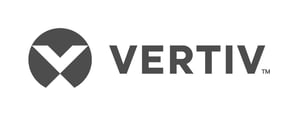According to Forrester's new report How To Build A Healthcare IoT Platform, "Healthcare CIOs and digital business pros need to create compelling IoT strategies now or risk losing the market to more digitally engaged competitors." The IoMT (internet of medical things) is dramatically altering the landscape of the industry, and Deloitte Center for Healthcare Solutions says that the overall IoMT market is expected to grow from $41 billion in 2017 to $158 billion by 2022.
Already, the market is brimming with "smart" health and fitness devices, from watches to scales, capable of capturing an individual's data, including weight and daily exercise levels, heart rate, blood pressure, and glucose levels, just to name a few. And as innovators like Apple, FitBit, and others find ways to use their devices to do things like diagnose atrial fibrillation, monitor depression, and ensure patient compliance with medication, healthcare providers will increasingly have access to a robust pool of patient data they can use to better diagnose, monitor, treat, and prevent illnesses and conditions.

The potential to improve patient care while simultaneously lowering healthcare costs is immense. Yet, all of the new data generated by connected devices poses several major challenges for healthcare IT managers, starting with the fact that existing infrastructure simply isn't robust enough to handle the influx. Then, of course, there are security and regulatory issues to consider.
 Deep diving into the complexities of digital health innovation
Deep diving into the complexities of digital health innovation
As IT departments look for ways to continue supporting the growth of IoMT, here are several points worthy of consideration:
1. Look to the fog to help add some bandwidth.
In this recent post, Jack Pouchet, vice president of Business Development at Vertiv, outlines the potential of fog computing to help manage additional volumes of data. Jack describes fog computing as similar to the concept of micro data centers being deployed at network edge. Essentially, fog computing can help control what gets in, so only the most valuable, actionable data enters the system.
2. Keep interoperability in mind.
Connected devices aren't the only thing adding to interoperability challenges for healthcare organizations. As the industry moves toward the goal of shared patient data between providers, payers, and patients themselves, creating standards for interoperability is a major focus. With IoMT, the challenges may be even more complex based on the sheer number of devices and device manufacturers in the market, and the fact that these devices have various ways of communicating with the network. IoMT also relies on connectivity technologies and interoperability between wireless standards.
3. Establish a cybersecurity risk management strategy that leverages healthcare-specific cybersecurity frameworks.
IoMT ushers in a whole new set of cybersecurity risks. Any of the thousands of connected devices used in a healthcare setting could provide an entry point for hackers. To stay on top of the issue, healthcare IT organizations need ways to keep track of all of the devices, identify and prioritize those that present the largest security risks, and implement controls that should include regular security assessments.
4. Stay abreast of regulatory changes.
The increased use of connected devices will no doubt complicate the requirement of ensuring patient privacy. Indeed, current privacy laws are proving to be somewhat of a hindrance to achieving interoperability goals. As IoMT continues to expand, regulations will need to evolve as well. Organizations will need to make the effort to stay up to date and ensure that they remain in compliance as the ways in which they receive and deliver information to patients continue to change.
5. Invest in scalable infrastructure that can keep up with rapidly changing requirements of healthcare delivery networks.
Continuity and reliability of the equipment and infrastructure that support data delivery in a healthcare environment are obviously non-negotiables. But given the rapid changes in the amount and types of data this network must support, flexibility and scalability are becoming equally as important. IT departments need technologies and pre-configured infrastructure solutions that make it easy to connect equipment across the network and scale up quickly as needed. And they need greater visibility and control into all IT-dependent operations across the healthcare network. Investing in smart infrastructure solutions and the services to support it can help IT departments more easily manage the growing complexity in healthcare IT and stay prepared for future developments.


.png?width=58&height=58&name=X_logo_2023_(white).png)
